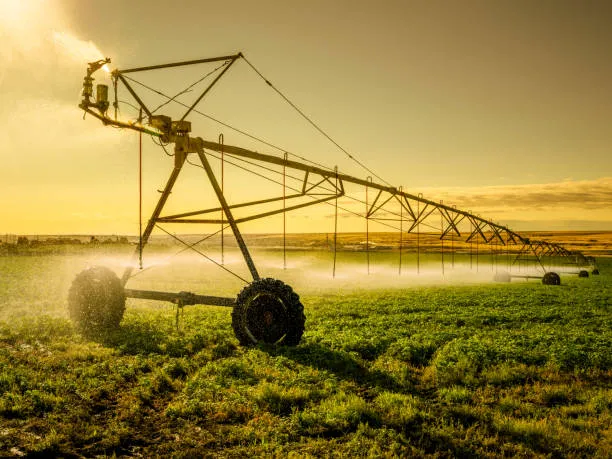Summer can be a challenging season for farmers, with high temperatures and limited water resources. Effective water management is essential to maintaining crop health, improving yields, and conserving resources. Fortunately, modern agricultural equipment is designed to help farmers optimize water usage and reduce waste. In this article, we’ll explore key tools and technologies that can help you manage water efficiently during the hot summer months.
1. Drip Irrigation Systems: Precision Watering for Maximum Efficiency
Drip irrigation is one of the most efficient ways to water crops during the summer. Unlike traditional sprinklers that can waste water through evaporation and runoff, drip irrigation delivers water directly to the roots of plants. This method reduces water usage and ensures that each plant receives the precise amount of water it needs to thrive.
Why it works:
-
Reduces water waste
-
Minimizes evaporation loss
-
Reduces weed growth by focusing water at the plant base
-
Prevents soil erosion
Equipment to consider:
-
Drip lines
-
Emitters
-
Pressure regulators
-
Filtration systems
Investing in a high-quality drip irrigation system can drastically reduce water usage on your farm while promoting healthier, more robust crops.
2. Soil Moisture Sensors: Monitor Your Farm’s Water Needs in Real-Time
Soil moisture sensors are invaluable tools for understanding how much water your soil actually needs. These sensors are placed in the soil to measure moisture levels at different depths. By using this data, farmers can avoid over-irrigating or under-irrigating, ensuring that crops get the right amount of water without wasting valuable resources.
Why it works:
-
Provides real-time data on soil moisture levels
-
Helps prevent over-watering or under-watering
-
Saves water by optimizing irrigation schedules
-
Reduces costs associated with water waste
Equipment to consider:
-
Wireless soil moisture sensors
-
Mobile apps for real-time monitoring
-
Automated irrigation controllers
By integrating soil moisture sensors into your irrigation system, you can make more informed decisions about when and how much water to apply.
3. Sprinkler Systems with Smart Controllers: Efficient Watering for Large Farms
For larger farms, sprinkler systems are still one of the most effective ways to cover a lot of ground. However, traditional sprinkler systems can be inefficient, especially when they’re not programmed to account for weather conditions or soil moisture levels. Smart controllers can optimize sprinkler schedules based on real-time weather data and soil conditions, significantly reducing water usage.
Why it works:
-
Automatically adjusts watering schedules based on weather forecasts
-
Prevents watering during rain or high winds
-
Reduces water waste
-
Can be controlled remotely for convenience
Equipment to consider:
-
Wi-Fi-enabled sprinkler controllers
-
Rain sensors
-
Flow sensors
Smart sprinkler systems help save water by ensuring that your crops are watered only when necessary, reducing unnecessary irrigation and promoting sustainable water use.
4. Rainwater Harvesting Systems: Collect and Store Water for Future Use
Rainwater harvesting is an eco-friendly and cost-effective way to supplement your irrigation needs. By collecting rainwater from roofs and other surfaces, farmers can store it for use during dry spells. This system reduces reliance on municipal water sources and can be especially helpful in areas with limited water availability.
Why it works:
-
Reduces reliance on external water sources
-
Provides water during dry periods
-
Helps lower water costs
-
Reduces runoff and soil erosion
Equipment to consider:
-
Gutter and downspout systems
-
Storage tanks
-
Filtration systems
Rainwater harvesting can be a great way to supplement your irrigation needs and conserve precious water resources.
5. Center Pivot Irrigation: Efficient and Cost-Effective for Large Fields
Center pivot irrigation is a popular method for large-scale farms, especially those growing row crops like corn, wheat, and soybeans. This system consists of a rotating sprinkler arm mounted on wheels that moves in a circular pattern, evenly distributing water across large areas. With modern technology, these systems can now be equipped with sensors and smart controllers to further reduce water use.
Why it works:
-
Covers large areas efficiently
-
Reduces water wastage with adjustable nozzles
-
Can be automated for optimal watering
-
Minimizes water evaporation
Equipment to consider:
-
Pivot systems with variable rate irrigation
-
GPS tracking systems
-
Smart controllers for real-time adjustments
Center pivot systems are ideal for large farms where water conservation is crucial, offering precision watering that reduces waste and ensures crops receive the right amount of hydration.
6. Water-Efficient Crop Varieties: Reduce Water Usage with Drought-Tolerant Crops
While not technically equipment, selecting drought-tolerant crop varieties can greatly improve your water management strategy. These crops are designed to withstand lower water availability and still produce high yields. By incorporating these varieties into your farming operation, you can reduce the need for excessive irrigation during the summer months.
Why it works:
-
Requires less water for growth
-
Helps maintain yields during drought conditions
-
Reduces dependency on irrigation systems
Crops to consider:
-
Drought-resistant varieties of corn, wheat, and rice
-
Heat-tolerant vegetable varieties
-
Native plants adapted to your region’s climate
Choosing drought-resistant crops can be an excellent complement to your water-saving equipment, helping you conserve resources while maintaining productivity.
Conclusion
Water management is a critical aspect of farming during the hot summer months. By investing in efficient equipment such as drip irrigation systems, soil moisture sensors, and smart sprinklers, farmers can ensure they’re using water as efficiently as possible. In addition, implementing systems like rainwater harvesting and center pivot irrigation can significantly reduce reliance on external water sources.
By embracing these water-conserving tools and practices, you’ll not only save money on water costs but also contribute to a more sustainable agricultural future.

